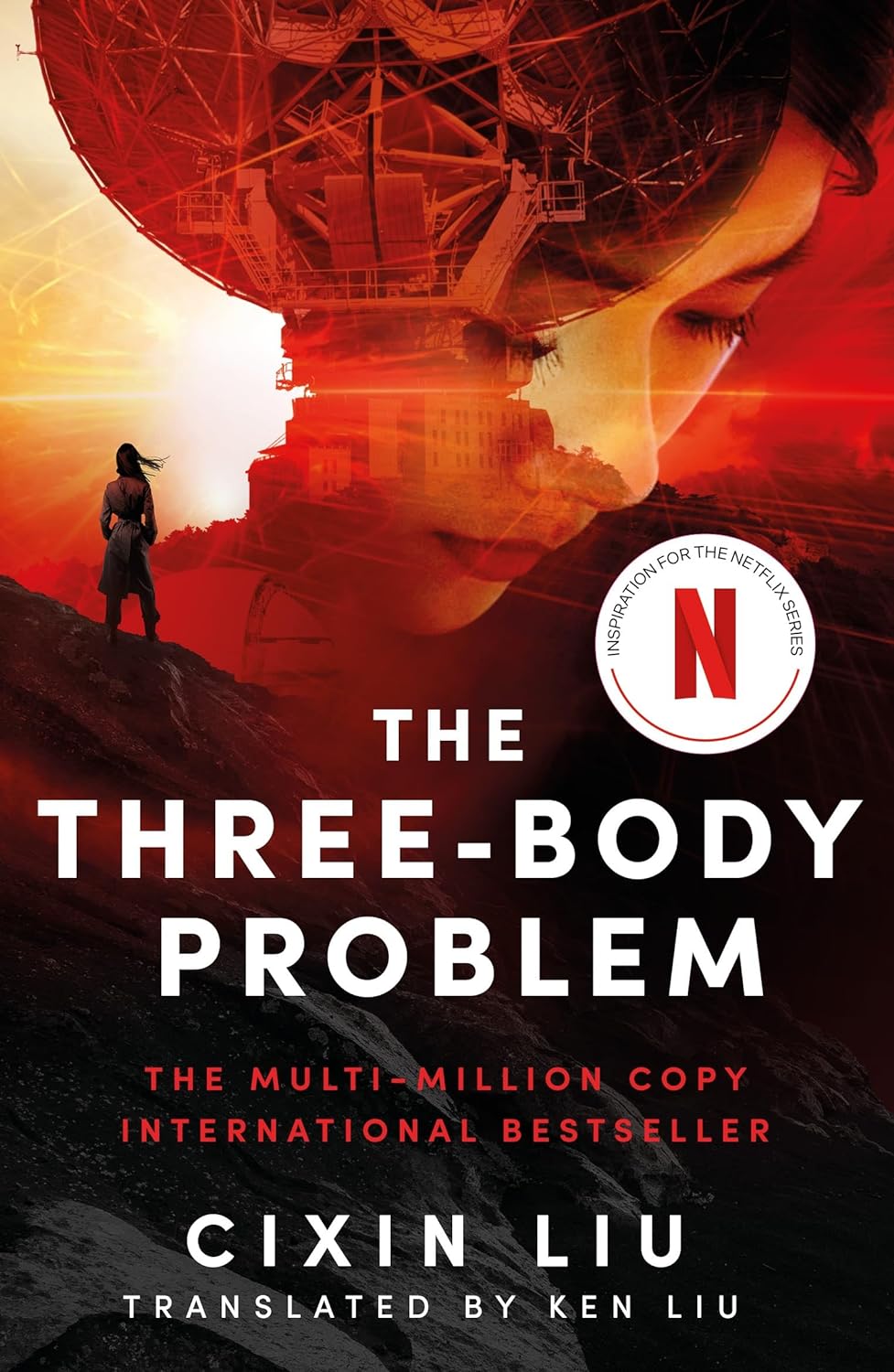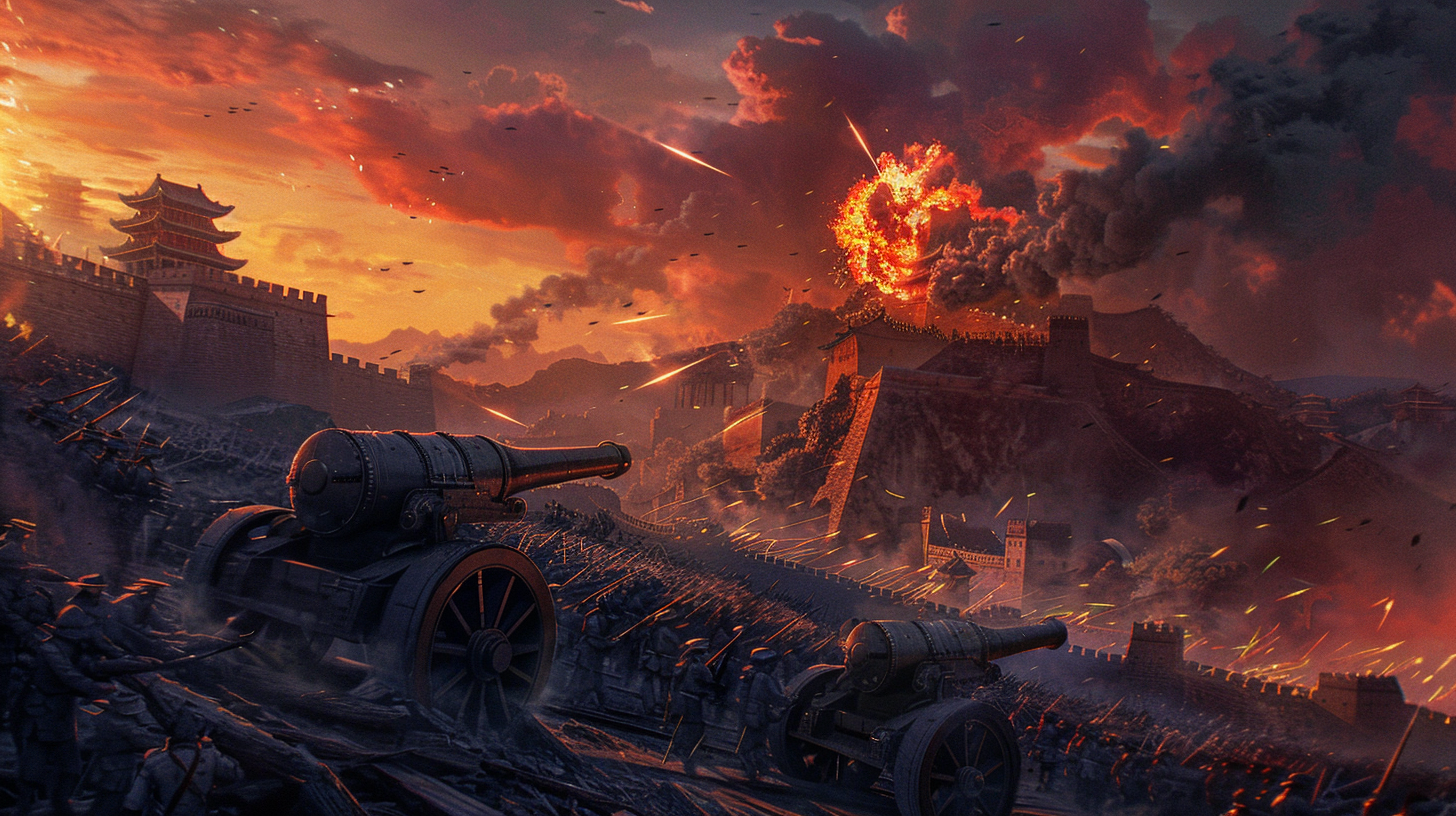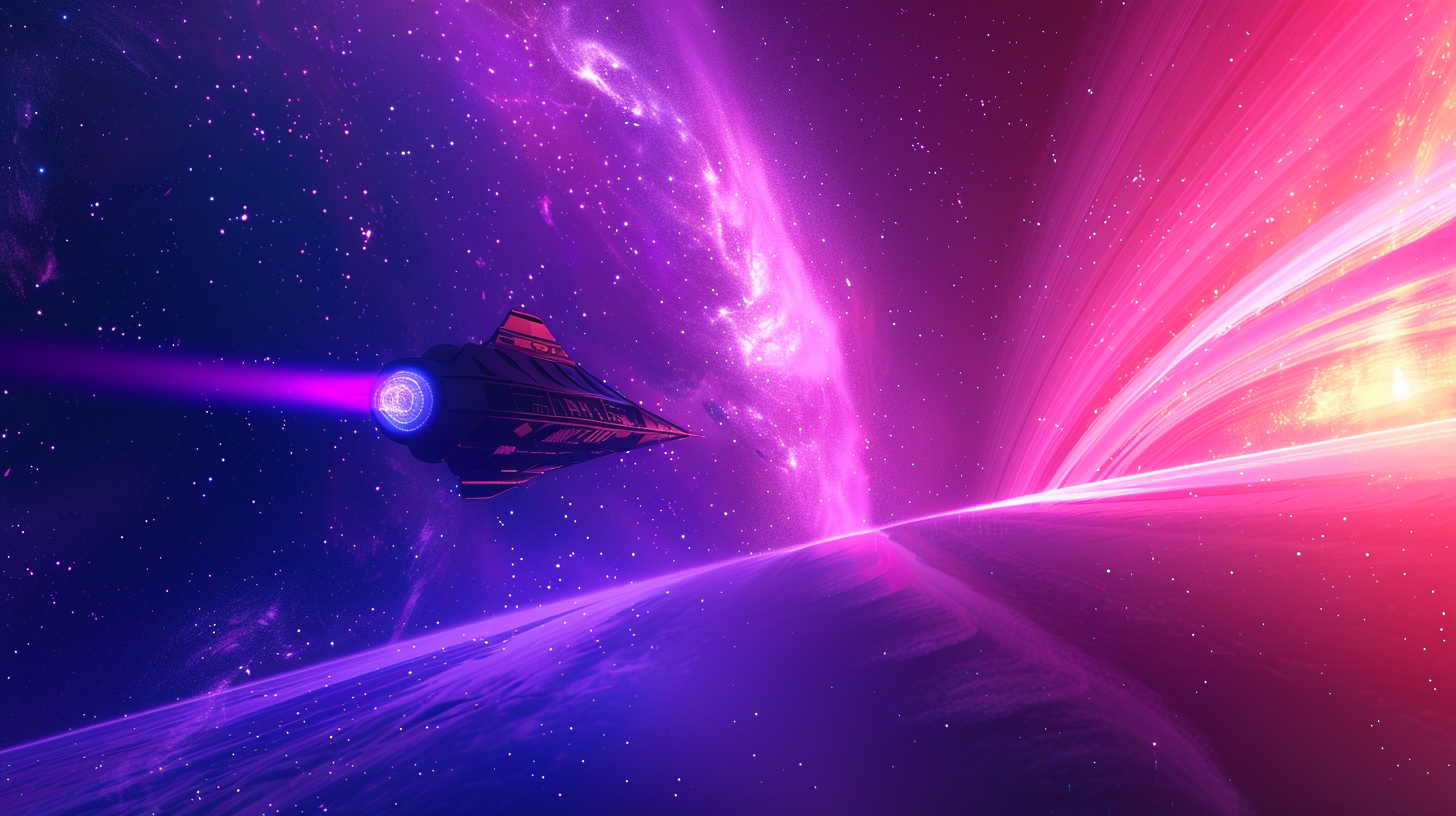Adversity to Innovation - The Three-Body Problem

Diving into The Three-Body Problem series by Cixin Liu opened my eyes to a riveting narrative oscillating between speculative fiction and stark realism. At its heart, the series isn't just a tale of extraterrestrial contact; it's a profound commentary on human resilience and innovation in the face of existential threats. This theme struck a chord with me, particularly the idea that our most significant technological leaps often emerge from our darkest times. It's a paradox that history illustrates repeatedly: adversity, especially during wars, accelerates innovation.

Reflecting on this, I can't help but draw parallels to our current technological landscape. Just as the characters in Liu's series navigate their crises with ingenuity, so have we, historically, turned our own crises into opportunities for advancement. Yet, there's a lesson here that extends beyond the battlefield or the silent wars waged in cyberspace. It's about the human capacity to innovate under pressure and how, perhaps, we can channel this capability towards overcoming today's challenges without the spectre of conflict hanging over us.
Today, I aim to explore the intricate dance between adversity and technological progress, drawing from historical examples and my own reflections. While Liu's work provides a fictional backdrop, the real-world implications of this dynamic are both immediate and profound. Let's delve into how, even in times of peace, we might harness the innovative spirit that has historically emerged from our most challenging moments.
A Global and Historical Perspective

History shows that adversity often leads to significant technological advancements. This pattern is evident across different cultures and periods, not confined to any specific region or era.
In ancient China, the invention of gunpowder was initially for medicinal purposes but eventually revolutionized warfare worldwide. This early innovation demonstrates how solutions for one problem can unexpectedly transform other aspects of society.
During the Islamic Golden Age, advancements in mathematics and physics, such as Al-Khwarizmi's introduction of algorithms and Ibn al-Haytham's studies in optics, laid foundational stones for modern sciences and technologies. Their work, driven by the era's intellectual curiosity, contributed significantly to fields beyond their immediate applications.
The Renaissance, marked by exploration and the rediscovery of classical knowledge, also saw technological leaps. Leonardo da Vinci's conceptual inventions, including designs for flying machines and armoured vehicles, showcase the era's blend of creativity and practical problem-solving, even if many of his ideas were ahead of their time.
The World Wars, particularly the second, are stark examples of how conflict can accelerate innovation. The development and widespread use of penicillin and advances in surgical techniques saved countless lives, demonstrating how urgent needs can push forward medical technology rapidly. Similarly, Alan Turing’s contributions to computing during World War II not only helped in the war effort but also set the stage for the digital revolution.
From the agricultural innovations of the Maya and Inca civilizations, which allowed for the support of large populations in challenging environments, to the sophisticated water management systems of the Islamic Golden Age, these adaptations to environmental challenges highlight human ingenuity in overcoming obstacles to survival and improving life.
This survey of human innovation in response to adversity underscores a common thread: challenges, whether from environmental pressures or the urgencies of conflict, have historically spurred progress. These examples from across cultures and ages reflect a consistent drive to find solutions, improve conditions, and push the boundaries of what is possible.
Weaponry and Defense

Technological innovation, particularly in weaponry and defence, embodies a paradox: the same ingenuity that gives rise to protection mechanisms can also fuel the development of more efficient means of aggression. This dual-edged nature is a theme as ancient as the invention of gunpowder in China.
Initially discovered by alchemists searching for the elixir of life, gunpowder's potential for weaponry soon became apparent. Its introduction revolutionized military strategy and combat, setting the stage for centuries of warfare evolution. This example underscores a recurring pattern in technological advancement: innovations arising from benign intentions can, and often do, find applications in conflict.
In more recent history, the development of nuclear technology during the 20th century further exemplifies this paradox. The pursuit of atomic energy for both civilian and military purposes has left an indelible mark on the world, demonstrating the immense power and peril of human innovation. While nuclear energy presents a significant source of clean power, the spectre of nuclear weaponry continues to pose one of the greatest threats to global security.
The realm of cybersecurity offers a contemporary perspective on this theme. The internet, conceived initially as a tool for communication and knowledge sharing, has become a battleground for state and non-state actors seeking to assert power or disrupt the social order. Cybersecurity measures, constantly evolving to defend against these threats, highlight the ongoing race between protective and offensive technologies.
This duality is not without its lessons. The development of defensive technologies such as armour, whether in ancient times or modern bulletproof vests, shows a continuous effort to protect life and property. Similarly, advancements in medical technology during conflicts aimed at saving lives illustrate humanity's capacity to find hope and progress amid adversity.
The challenge, then, is to navigate this paradoxical landscape to minimize harm while maximizing the benefits of our technological capabilities. The history of gunpowder, from its origins to its role in warfare, serves as a reminder of the responsibility accompanying innovation. As we develop new technologies, considering their potential impacts on defence and offence becomes increasingly critical.
The Invisible War

In the contemporary landscape, the battleground has extended far beyond the physical realms of land, sea, and air, venturing into the vast and nebulous territory of cyberspace. This new frontier of warfare and espionage is characterized not by the clash of armies but by the silent skirmishes of data breaches, espionage, and the manipulation of digital infrastructures. It's a realm where information is both a weapon and a prize and where the keystrokes of a skilled hacker can have as much impact as the bullets of a soldier.
This shift towards digital dominance represents a profound transformation in how conflicts are waged, and security is maintained. From the strategic deployment of cyberweapons to the construction of vast surveillance networks, the tools and tactics of digital warfare are evolving at an unprecedented pace, often outstripping the legal and ethical frameworks that govern them.
The Enigma Machine and Cryptography's Double-Edged Sword
The breaking of the Enigma code by Alan Turing and his team during World War II is a landmark in the history of cryptography. Positively, it significantly shortened the war, saving countless lives by enabling the Allies to intercept and decipher Axis communications. This breakthrough in cryptography also laid the groundwork for modern computing and information security, fields that underpin the digital economy and protect sensitive data worldwide.
However, the Enigma episode also illustrates the perpetual arms race in encryption and decryption, a precursor to today's cybersecurity battles. It raises enduring questions about privacy and the extent to which governments and other entities should be able to intercept communications for national security purposes. This theme resonates with the global surveillance networks described in The Three-Body Problem.
Edward Snowden and the Surveillance State
The revelations by Edward Snowden had the positive effect of igniting a global debate on privacy, surveillance, and the balance between national security and individual liberties. They spurred reforms in surveillance practices and policies in various countries, promoting greater transparency and oversight of intelligence activities.
On the downside, Snowden's disclosures also revealed how technology can be utilized to create pervasive surveillance systems, echoing the sophisticated monitoring used by extraterrestrial forces in The Three-Body Problem to manipulate and control human society. The negative impact on trust—between governments, among nations, and between citizens and their leaders—has been profound, highlighting the fragile nature of privacy in the digital age.
The Stuxnet Worm and the Ambiguity of Cyber Warfare
Stuxnet marked a significant moment in the history of cyber warfare, demonstrating the potential to cause physical damage via digital means. Its success in hindering Iran's nuclear program is viewed positively by some as a means of averting a potential military conflict. Yet, the use of such a powerful cyber weapon also set a precedent for state-sponsored attacks on industrial and infrastructure systems, raising ethical concerns about the normalization of digital sabotage and the potential for escalation into broader conflicts.
While not involving extraterrestrial technology, the deployment of Stuxnet mirrors the covert and technologically sophisticated methods of warfare depicted in The Three-Body Problem. The worm's capability to infiltrate and manipulate systems without detection parallels the advanced surveillance and control tactics employed by the Trisolarans, underscoring the vulnerabilities inherent in our reliance on technology.
Reflections from The Three-Body Problem
In the book, the Trisolarans' ability to monitor and influence Earth through advanced technology serves as a cautionary tale about the potential for technology to be used for both benevolent and malevolent ends. The novel prompts readers to consider the ethical implications of surveillance, the potential for weaponising technology, and the need for responsible stewardship of technological power.
As we navigate the complexities of the invisible war in our own world, these examples from history and contemporary issues, alongside the fictional scenarios in the book, offer valuable insights. They remind us of the need for vigilance, ethical consideration, and international cooperation in the face of technological advancements that have the power to both protect and harm humanity.
Applying Lessons to Today’s Challenges

The book's characters navigate a universe fraught with existential threats, leveraging their unique strengths to confront these challenges. Their stories, rich with lessons of resilience, innovation, and ethical complexity, can guide us in addressing some of the most pressing issues of our time: renewable energy, disease prevention, and digital privacy.
The Ingenuity of Wang Miao
Wang Miao's scientific curiosity and problem-solving skills highlight the importance of innovation in the face of seemingly insurmountable challenges. Applying Wang's approach to renewable energy involves fostering a culture of continuous research and development, pushing the boundaries of current technologies to harness the power of the sun, wind, and other sustainable resources more efficiently. It encourages a multidisciplinary perspective, combining insights from physics, engineering, and environmental science to discover breakthroughs in energy storage, transmission, and utilization.
The Resilience of Ye Wenjie
Ye Wenjie's resilience in the face of personal and global crises underscores the critical role of perseverance in disease prevention. Inspired by her character, efforts in disease prevention could focus on long-term strategies and investments in public health infrastructure, including developing vaccines, antimicrobial resistance research, and global surveillance systems to detect and contain outbreaks before they spread. Wenjie's story reminds us of the importance of sustaining hope and effort, even when progress seems slow or the challenges overwhelming.
The Ethical Dilemmas of Luo Ji
Luo Ji's navigation of ethical dilemmas, especially concerning the manipulation and control of information, speaks directly to the contemporary issue of digital privacy. His strategies invite us to think critically about the balance between surveillance for security purposes and the protection of individual rights. In the context of digital privacy, adopting Luo's perspective means advocating for robust encryption standards, transparent data practices, and policies that prioritize user consent and control over personal information. It also involves educating the public about digital rights and fostering a global dialogue on the ethical use of technology.

The characters in The Three-Body Problem show that facing global challenges requires a combination of technical innovation, perseverance, and ethical consideration. In the realms of renewable energy, disease prevention, and digital privacy, their stories inspire us to pursue solutions that are effective but also equitable and sustainable.
Emulating the series’ protagonists, we can approach these issues with a blend of creativity and critical thinking, leveraging technology to improve lives while also navigating the moral complexities inherent in such advancements. Their trials and tribulations encourage us to envision a future where humanity rises to meet its challenges through a collective commitment to innovation, resilience, and integrity.
Conclusion

Reflecting on the journey through The Three-Body Problem series and its vivid portrayal of humanity's struggle and resilience, I find myself inspired and sobered by the parallels between the fictional challenges faced by its characters and the real-world issues confronting us today. From the realms of renewable energy and disease prevention to the intricate dance of digital privacy, the series offers more than just a narrative; it presents a blueprint for innovation in the face of adversity.
The resilience of Ye Wenjie, the ingenuity of Wang Miao, and the ethical navigation of Luo Ji provide not just lessons in character but a call to action for all of us. Their stories remind us that the greatest innovations often arise from the most daunting challenges, pushing us to think beyond the confines of our current capabilities and circumstances.
As I look at the world, marked by rapid technological advancement and complex global challenges, I am reminded that the spirit of innovation is not confined to the crises of war or the threats of extraterrestrial manipulation. It lies within our daily struggles to make the world a better, more sustainable, and equitable place for future generations.
The path forward, illuminated by the trials and tribulations of The Three-Body Problem characters, is one of perseverance, creativity, and ethical consideration. It urges us to leverage our collective talents and insights to overcome the challenges of our time, just as the characters sought to navigate the uncertainties of their own.
In conclusion, the series not only entertains and provokes thought but also serves as a reminder of our potential to enact positive change. As we face our current and future challenges, let us draw inspiration from these narratives to break through the barriers before us, innovating for a better world with the determination, creativity, and integrity that define the best of our shared humanity.
